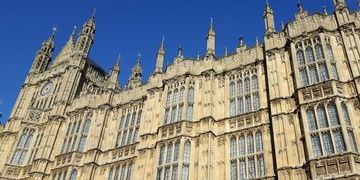James Tooze looks at the recent release of R&D investment statistics
Business R&D investment rises in 2019
10 Dec 2020
The release of R&D investment statistics gives us the opportunity to assess the progress that is being made towards the UK’s goal of increasing its research intensity to 2.4% of GDP. Business R&D is the most important part of this endeavour, accounting for roughly 70% of research investment in the UK. The recent release shows that business investment in R&D rose in 2019, but the rate of increase has slowed when compared to the last few years.
Research investment grew by £200m in real terms from 2018 to 2019 to £25.9bn, which is smaller than the £900m increase from 2017 to 2018 and £800m from 2016 to 2017. Business investment in R&D is the equivalent of 1.2% of UK GDP.

Business investment in research remains to be dominated by a few sectors. Pharmaceutical business R&D expenditure represents 18% of the UK total, followed by the automotive sector which accounts for 13% of business investment. Computer programming and software development is becoming an increasingly significant part of the UK’s R&D portfolio, with investment in these technologies doubling since 2008 and now representing 14% of business R&D expenditure.
Despite smaller increases in R&D investment, the number of people employed in research-intensive businesses continues to grow steadily, reaching 263,000 in 2019. It is particularly pleasing to see that the number of scientists and engineers has increased by 8,000 full-time equivalent posts between 2018 and 2019. Since 2012, employment in research-intensive businesses has increased by over 100,000 full-time equivalent posts.

Using employment data also allows comparisons to be made across regions. Much of the UK’s business R&D portfolio is concentrated in London and the South East, with 54% of research investment being made in London, the South East and the East of England. These are also some of the most densely populated regions of the UK – but using employment data can standardize the data across the country. Using a measure of business R&D expenditure per full-time equivalent employee, the South East, East of England and London still see greater levels of investment than the UK average.

As different regions have a different portfolio of research-intensive companies, it would be difficult to draw conclusions as to why the investment profile is significantly different across the UK. What this data does show, however, is that more needs to be done to encourage business investment to all areas of the UK as part of the UK Government’s ‘levelling up’ agenda. An R&D Place strategy is being developed and must contain some solutions to incentivise business R&D investment across the country.
One significant change from last year’s statistical release is the balance of investment from UK-owned and foreign-owned businesses. Over the past few years, foreign-owned businesses have invested more in R&D that UK-owned businesses but 2019 saw UK-owned business investment rise significantly. While this is pleasing to see, the figures showed that investment form foreign-owned businesses dropped significantly from 2018 to 2019, the first decrease since 2009.

However, given that the overall quanta of business R&D investment remains relatively level, combined with the fact that these shifts represent largest single year increase in investment from UK-owned businesses and the largest single year decrease in investment from foreign-owned businesses, it is possible this shift is a result of an accountancy change. If it is for any other reason, such as foreign-owned businesses scaling back their operations in the UK (due to Brexit, for example), it would be a real concern.
Due to the long-term nature of business investment decisions, these statistics will often reflect investment decisions made a number of years ago. Business investment will be the driver of the UK increasing research intensity to 2.4% of GDP and the Government must continue to make the UK an attractive destination for investment.
Related resources

This synthesis draws out key policy implications from the findings of a report commissioned by the British Academy and CaSE. The systems-based analysis of the strengths and weaknesses within the UK’s innovation system, ‘From Research to Productivity: A Systems Analysis of UK Innovation Pathways’, was conducted by Cambridge Econometrics.

In 2024, the British Academy and CaSE commissioned Cambridge Econometrics and the Innovation and Research Caucus to conduct this systems-based analysis of the strengths and weaknesses within the UK’s innovation system.

CaSE’s comprehensive analysis of the measures that impact R&D announced in the 2025 Spending Review

CaSE’s response to the House of Lords Science, Innovation and Technology Select Committee inquiry into: Financing and Scaling UK Science and Technology: Innovation, Investment, Industry.